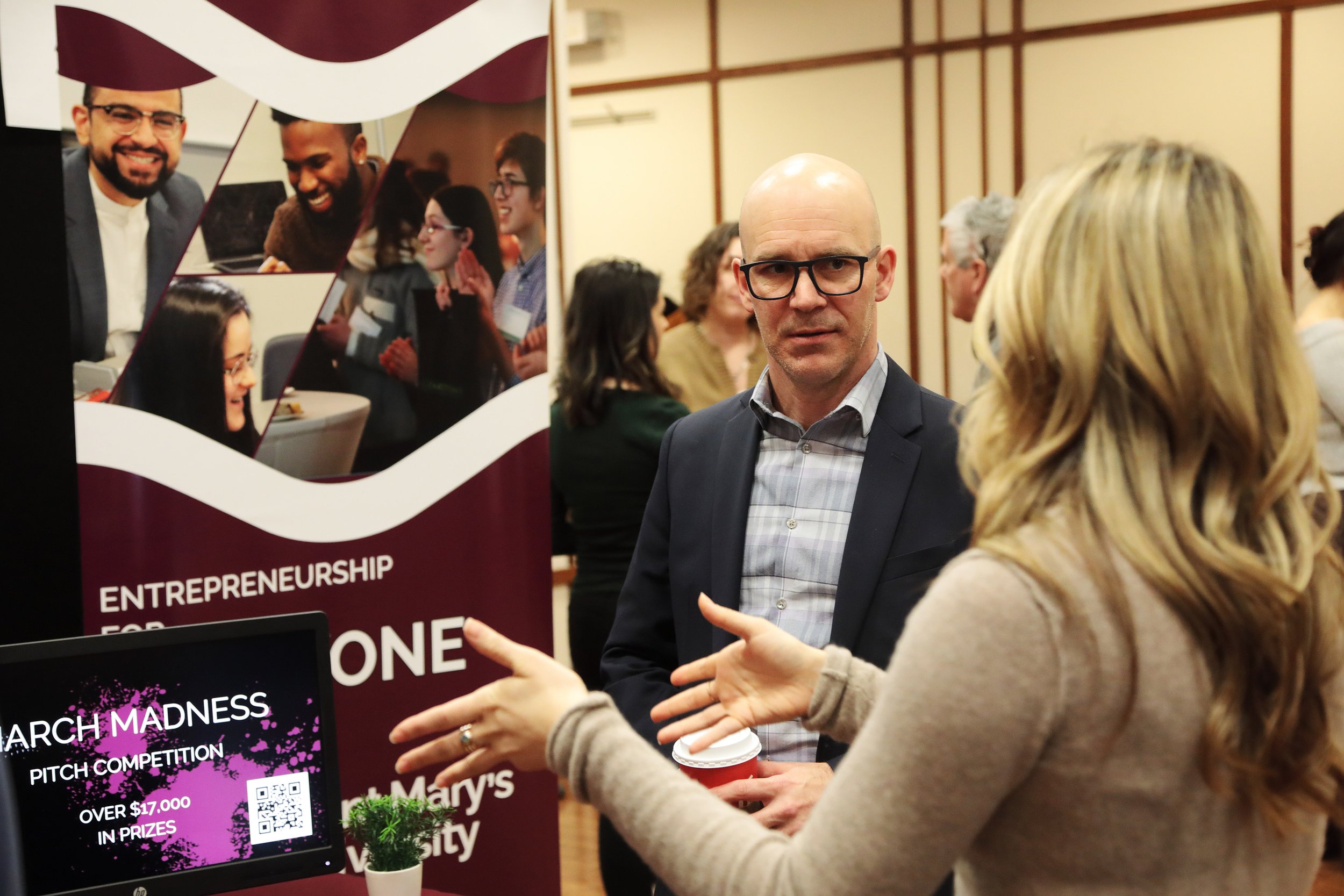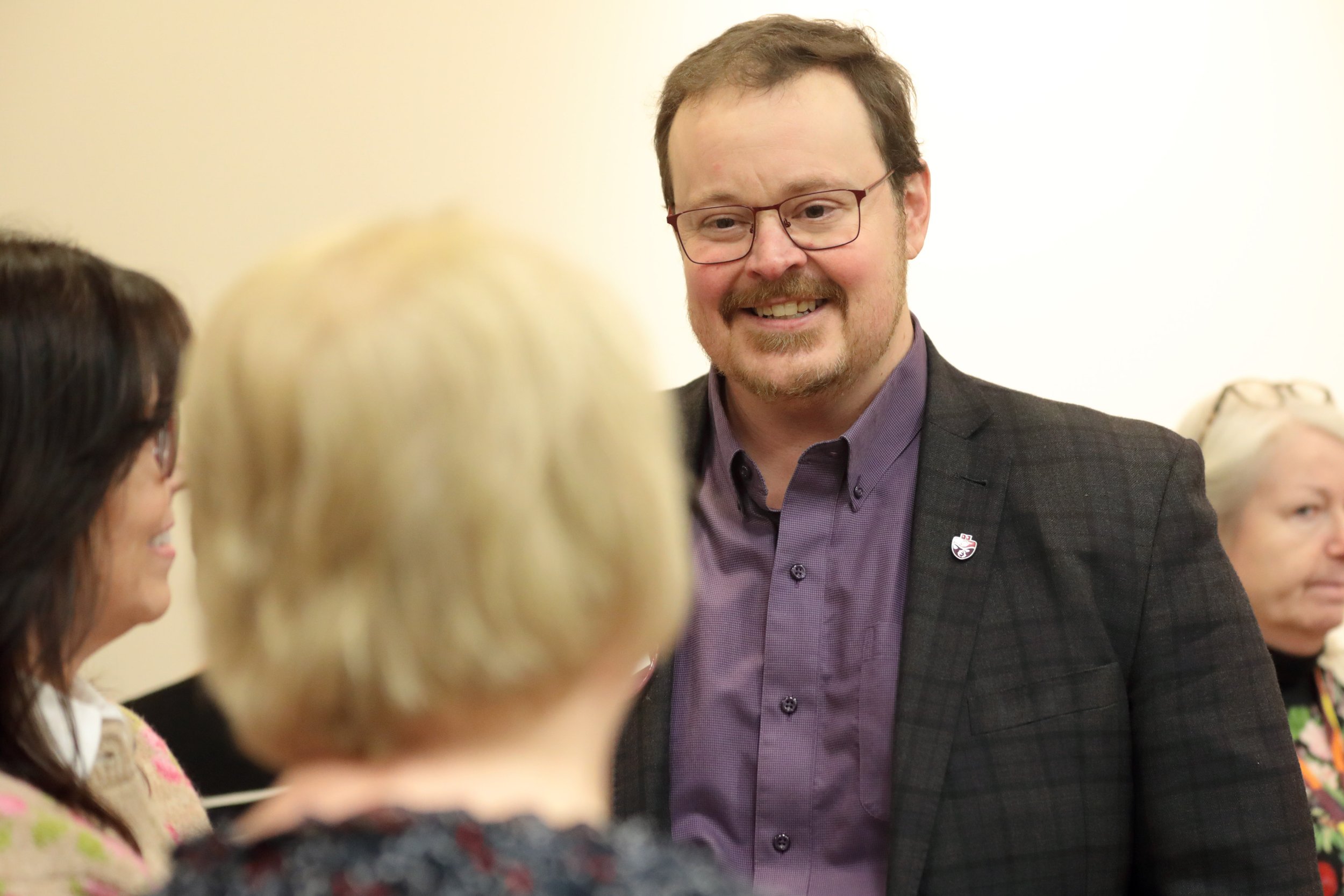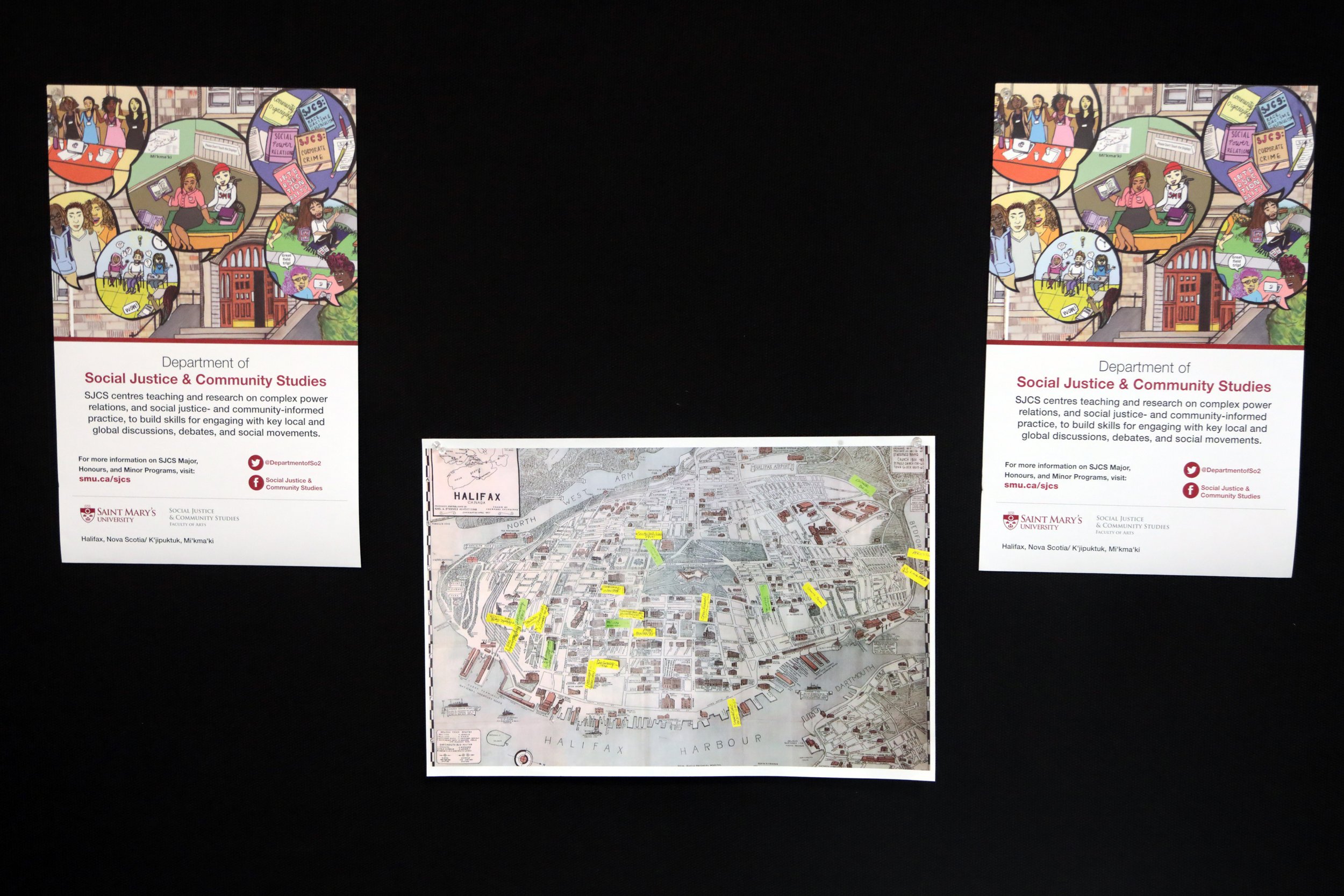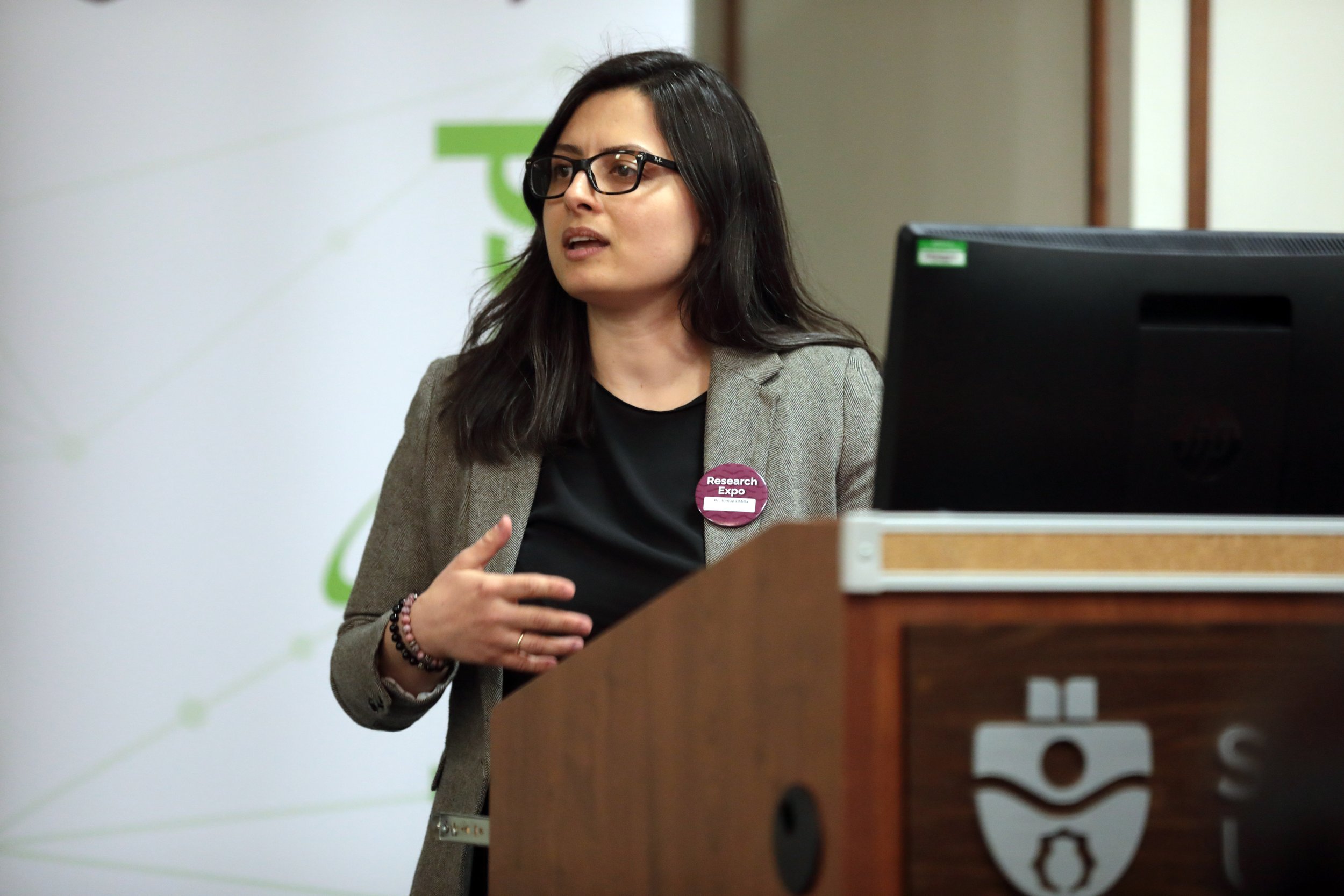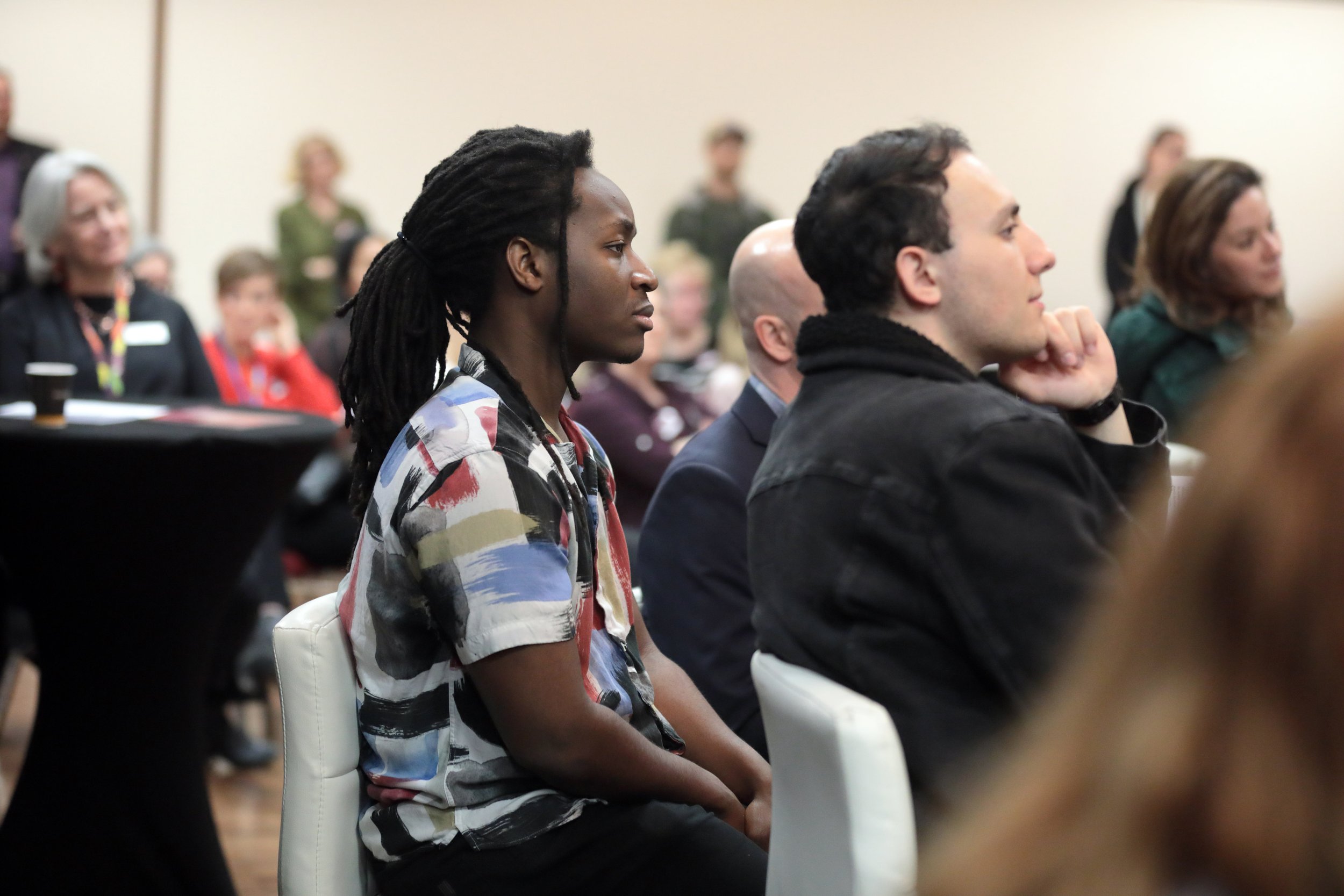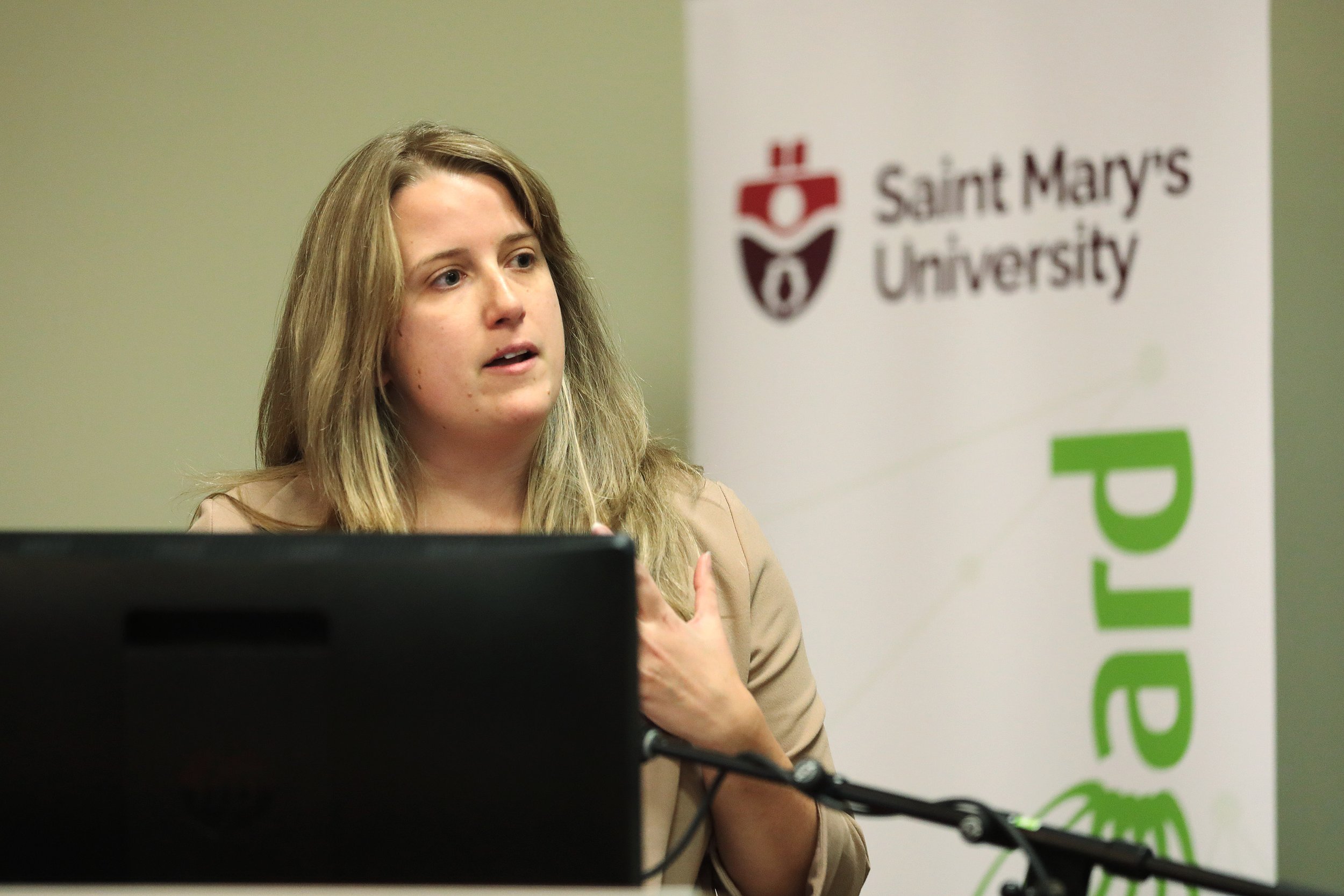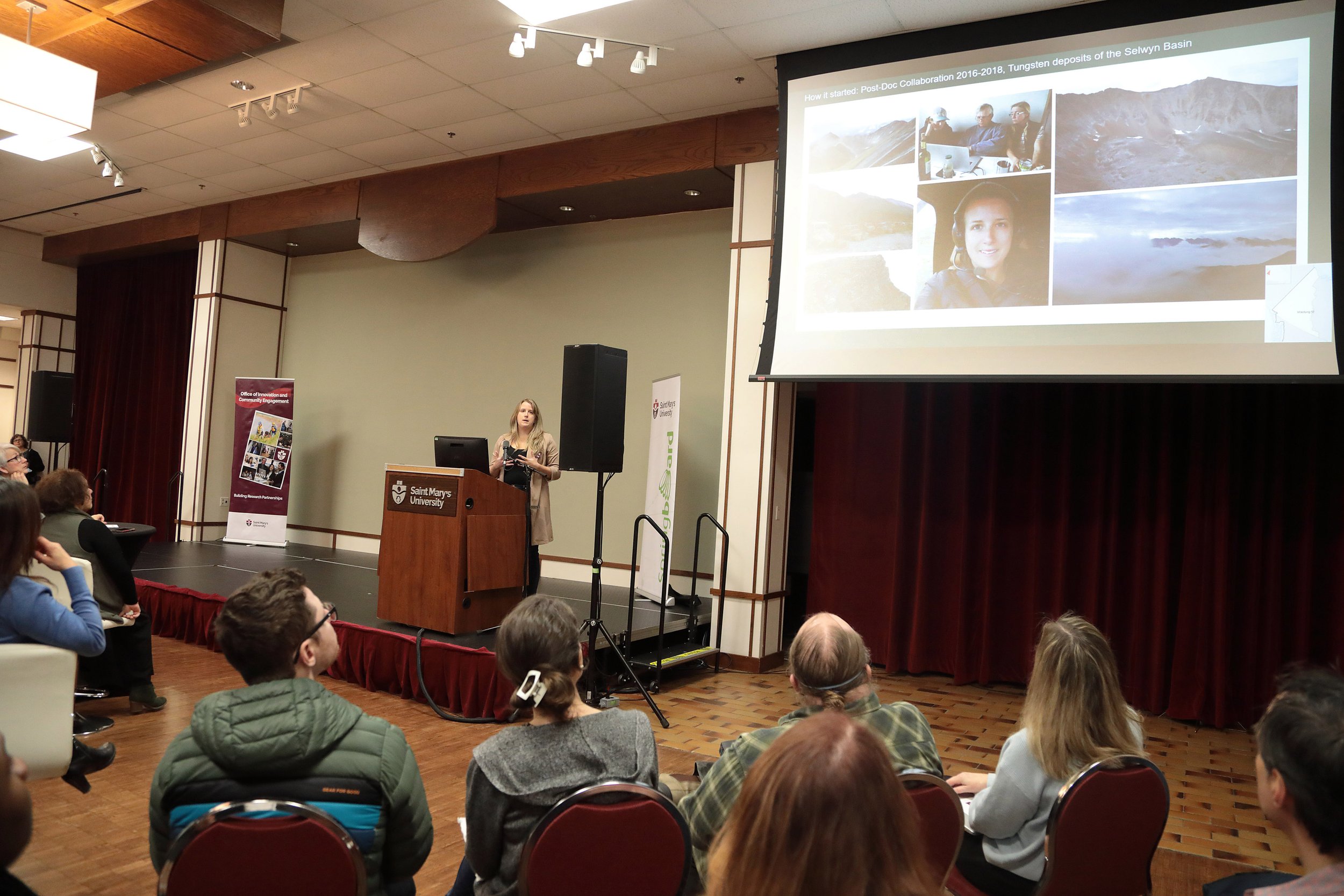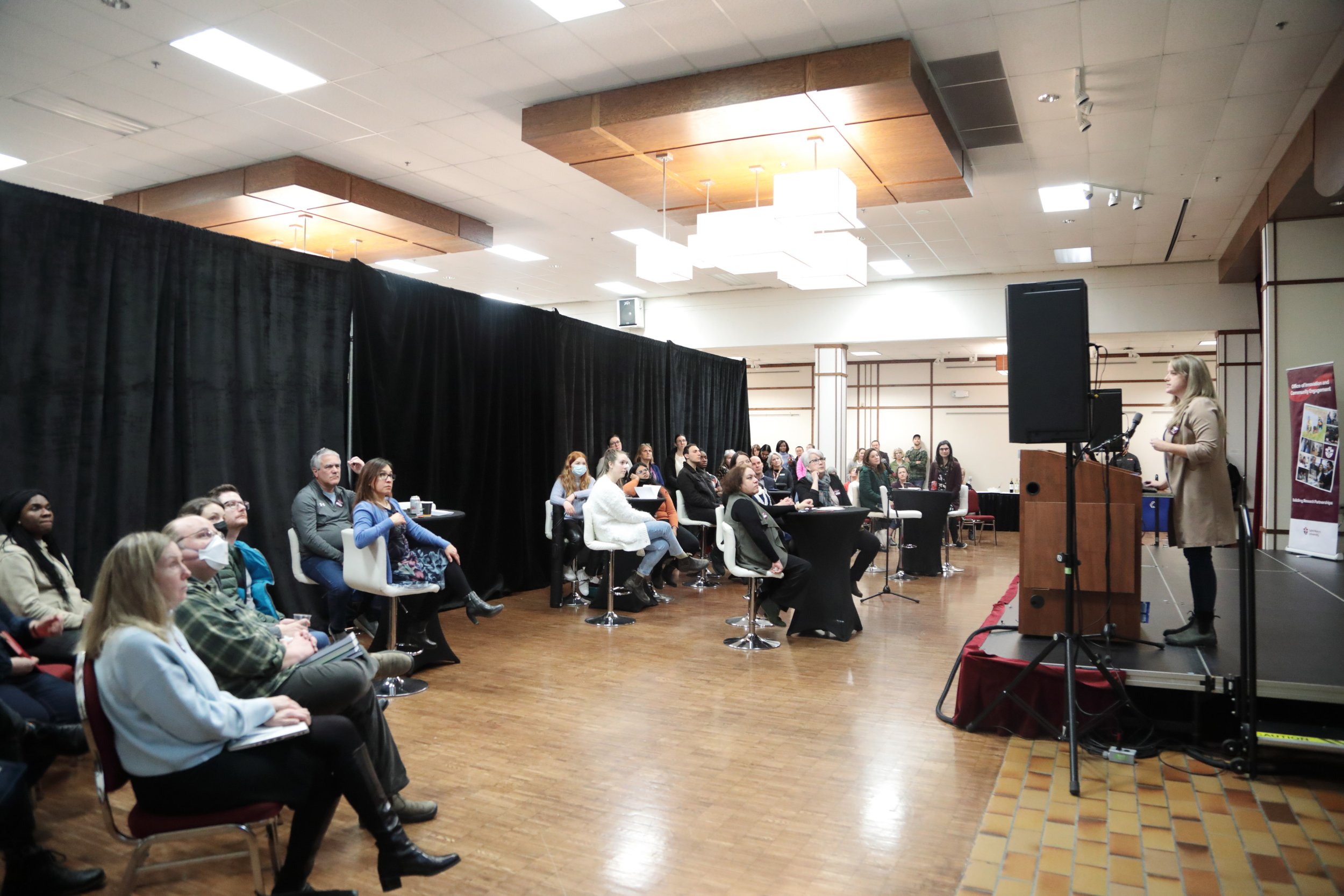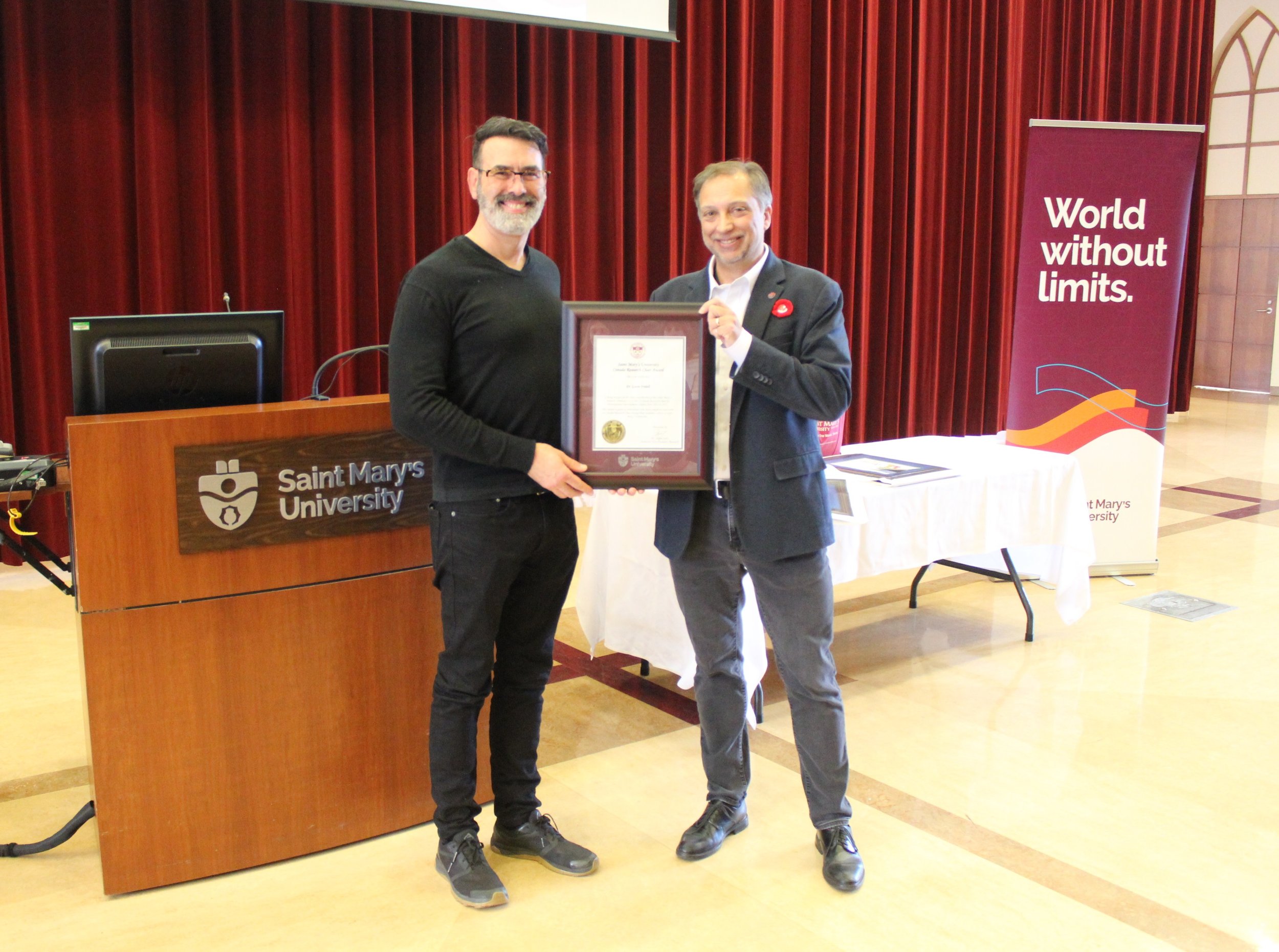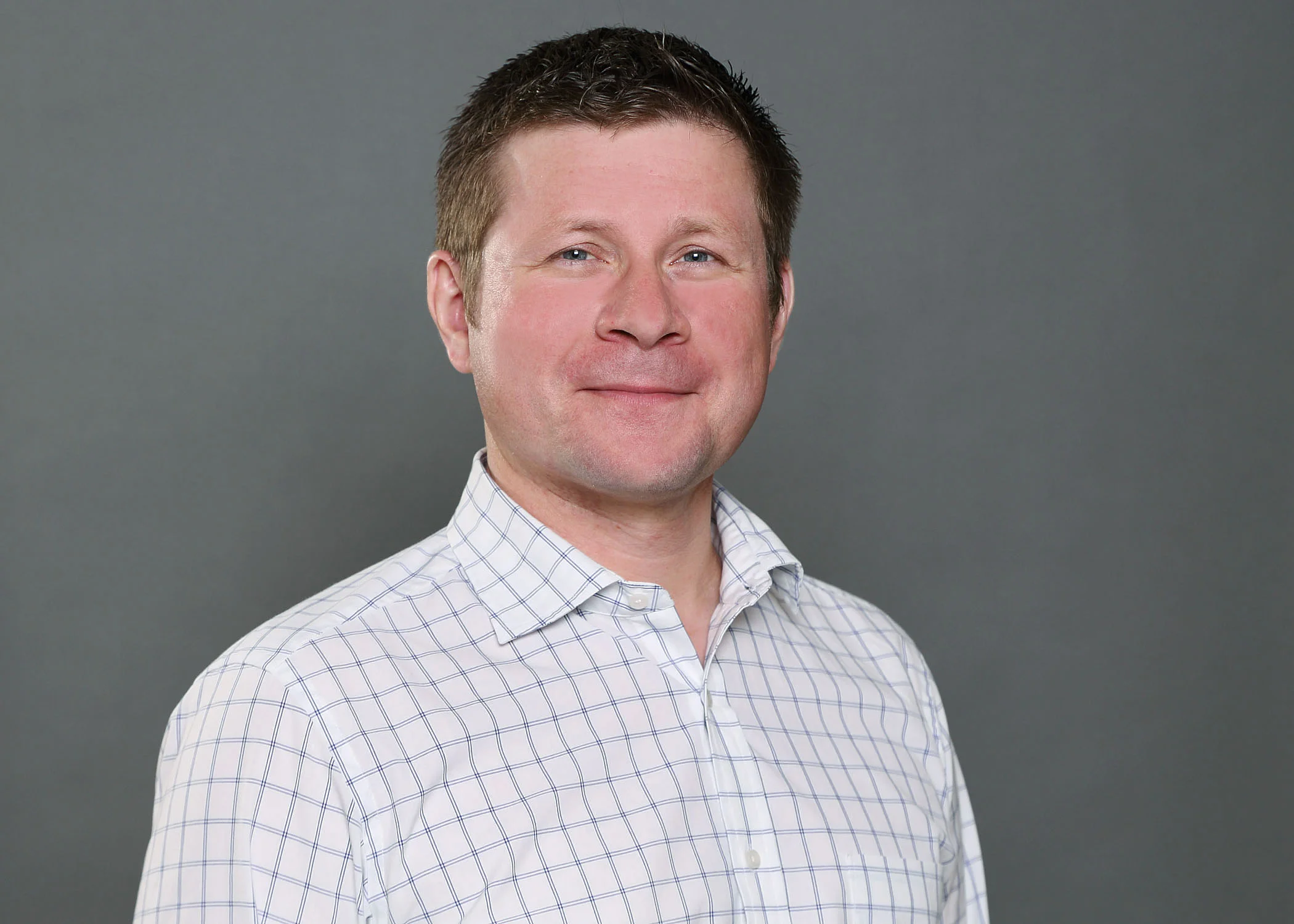Saint Mary’s University summer camps offer exciting opportunities for hands-on learning, skill-building and fun for kids and teens! Check out our science and Jr. Huskies athletics camps available this summer.
Science
Marine Mammal Camp
July 29-August 7, 2023
Ages 14-17
Campers will work together to explore the biology and evolution of marine mammals using surveys, photo-identification, acoustic monitoring, DNA analysis, examination of marine mammal skeletons, and more! Camp begins at Saint Mary’s University and moves to Campobello Island, New Brunswick, where campers will participate in the daily operations of scientific fieldwork and field camp life.
Marine Mammal Summer Camp is presented by Saint Mary’s University and the Canadian Whale Institute.
Due to the nature of the camp and the travel involved, there are limited spaces for campers. Because of this, interested students must apply and be accepted to Marine Mammal Camp before they can register. Applications are due by April 11, 2023.
Forensic Science Camp
July 10-14, 2023
July 17-21, 2023
9 a.m.-4:30 p.m.
Ages: 14-17
This camp will introduce campers to the basics of the field of forensic science. Through hands-on application of lab and field-based research techniques and practices, campers will work together to explore how the sciences are applied in forensic situations as well as the theories and principles underlying these applications.
Cost is $375. Applications are due by May 8, 2023.
Jr. Huskies Athletics
Basketball
All genders
Five-Day Camp
July 3-7, 2023
9 a.m.-4 p.m. (Supervised from 8 a.m.-5 p.m.)
Ages 5-12
Five days of fundamental skill development, modified games and fun-filled basketball activity. Quality coaching by Varsity Head Coaches for Men's and Women's Basketball, assistant coaches and some of the best student-athletes in Canada. The cost is $240, which includes a camp t-shirt.
Boys
Five-Day Camps
July 24-28, 2023
July 31-August 4, 2023
August 7-11, 2023
9 a.m.-4 p.m. (Drop-offs and pick-ups between 8 a.m.-5 p.m.)
Ages 5-13
Emphasis on individual skill development and team concepts of offence and defence. Also, skills contests, game situation drills and full-court games. Quality coaching by Varsity Head Coach Jonah Taussig and Men's Basketball Huskies members. There is limited registration for each camp, and cost is $240, including a camp t-shirt.
Girls
Five-Day Camps
July 10-14, 2023
August 14-18, 2023
9 a.m.-4 p.m. (Drop-offs and pick-ups between 8 a.m.-5 p.m.)
Ages 5-13
These camps emphasize individual skill development and team concepts of offence and defence. Also, skills contests, game situation drills and full-court games. Quality coaching for girls’ basketball camp by Head Coach Scott Munro and Women's Varsity Huskies members. The cost is $240, which includes a camp t-shirt.
Hockey
All genders
SMU Prospects Training Camp
August 28-31, 2023
8 a.m.-4 p.m.
Players born 2010-2011, 2011-2012, and 2013-2014
Girls: born 2009-2010
For Elite Level AA/AAA players. Extensive off-ice training, information and exposure to cutting-edge training techniques. On-ice sessions focus on five skills components, competing situations and small area games. Interactive classroom teaching and specialized individual goaltender training.
Registration is limited. The cost is $425, which includes a hockey jersey.
Goaltending Camp
August 1-4, 2023 (4 day camp)
Players born 2010-2012: 8 a.m.-2 p.m.
2008-2009: 8:45 a.m.-3 p.m.
2007+: 2:30 p.m.-5 p.m.
Multiple on-ice daily sessions plus classroom sessions and off-ice activities for 2010-2012 & 2008-2009 groups. 2007+ group has one on-ice session and off-ice gym/workout per day.
Registration is limited. The cost is $599, which includes a hockey jersey. 2007+ group cost is $259.
Boys
Jr. Huskies Dynamic Skating and Skills
August 7-11, 2023
8 a.m.-4 p.m.
Players born 2011-2012, 2013-2014 (FULL DAY): 8 a.m.-4 p.m.
Players born 2017-2018 (HALF DAY): 8 a.m.-12 p.m.
Players born 2015-2016 (HALF DAY): 12:30-4:30 p.m.
Extensive off-ice training, information and exposure to cutting-edge training techniques. On-ice sessions include five skills components, competing situations and small area games. Daily goaltender instruction and interactive classroom teaching.
Registration is limited. The cost is $250 for a half-day and $495 for a full day, including a hockey jersey.
Jr. Huskies Defensive and Offensive Camps
August 21-25, 2023
8 a.m.-4 p.m.
Players born 2011-2012 & 2013-2014: Scoring & Battling Camp
Players born 2011-2012 & 2013-2014: Advanced Defensive Development
Defensive camp on-ice sessions include lateral and backward skating, situational passing, shooting from the point and defending. Offensive camp on-ice sessions include shooting, deking, scoring skills in small spaces, balance/strength on skates, puck protection, and power moves for body positioning. 1:5 instructor-to-student ratio and interactive classroom teaching. Ten hours (minimum) of on-ice training.
Registration is limited. The cost is $549 which includes a hockey jersey.
Girls
Five-Day Development Camp
August 14-18, 2023
9 a.m.-4 p.m.
Players born 2011-2012, 2013-2014, 2015-2017
All sessions are run by SMU coaching staff and players. This an excellent opportunity to get ready for the upcoming season! This week-long camp is designed for players wanting to improve all aspects of their game. The daily schedule includes two on-ice sessions, off-ice fitness, an off-ice puck skills session and an instructional classroom session. Players will be challenged in a fun learning environment, playing in small area games and other compete-type stations.
Registration is limited. The cost is $435 and $350 for goalies.
Soccer
Micro Huskies (All genders)
July 3-7, 2023
July 10-14, 2023
Half Day 9 a.m.-noon, Full Day 9 a.m.-4 p.m. Drop-off/pick-up 8:30 a.m.-4:30 p.m.
Ages 5-7
Micro Huskies allows young players to develop physical literacy and fundamental movement skills like running, jumping, landing, passing and dribbling in a fun setting built around play and positive reinforcement.
The cost is $125 for a half day and $200 for a full day.
Mini Huskies (All genders)
July 3-7, 2023
July 10-14, 2023
Half Day 9 a.m.-noon, Full Day 9 a.m.-4 p.m. Drop-off/pick-up 8:30 a.m.-4:30 p.m.
Ages 8-10
Mini Huskies allows players to develop their movement ABCs - agility, balance, coordination and speed - and learn the fundamentals of the game while emphasizing fun, cooperation and maximum time on the ball within a challenging environment.
The cost is $125 for a half day and $200 for a full day.
Jr. Huskies (All genders)
July 3-7, 2023
July 10-14, 2023
Half Day 9 a.m.-noon, Full Day 9 a.m.-4 p.m.
Ages 11-13
Junior Huskies is geared toward players looking to improve their skills and soccer IQ. The sessions will focus on advanced soccer skills and introducing position-specific techniques and concepts.
The cost is $125 for a half day and $200 for a full day.
Volleyball
Girls
August 21-25, 2023
August 28-September 1, 2023
9 a.m.-4 p.m.
Ages 12-18
The overall goal of this camp is to provide an environment where volleyball players can develop their skills and have fun playing the game. Campers will be grouped by age and/or experience level (preference can be accommodated to provide social experience within the context of the camp goals - campers can choose to change groups if they prefer). Classroom sessions will be included (for example strength training, sports taping, nutrition, etc.).
Registration is capped at 80 campers. The cost is $250.
Football
All genders
July 24-26, 2023
9 a.m.-4 p.m.
Ages 6-12 (Non-contact) & 9-14 (Contact)
Full gear required for contact camp. Cost for non-contact camp is $150 and cost for contact camp is $190.




